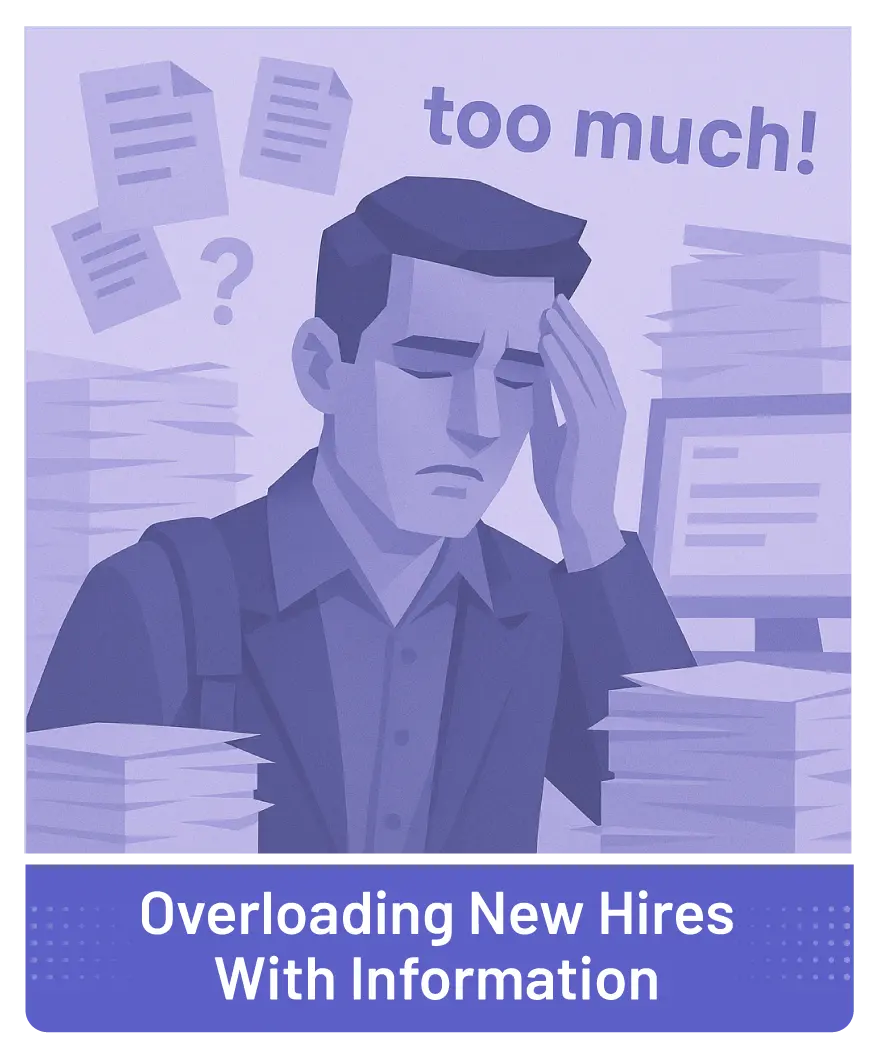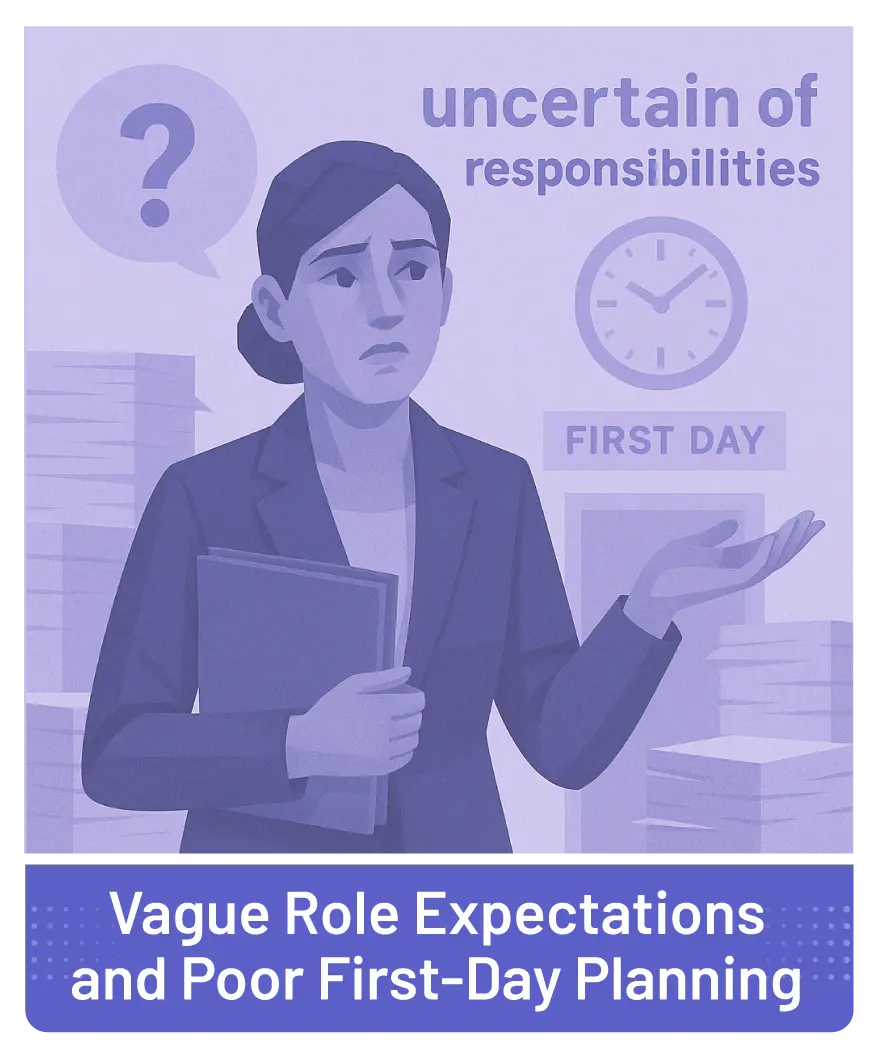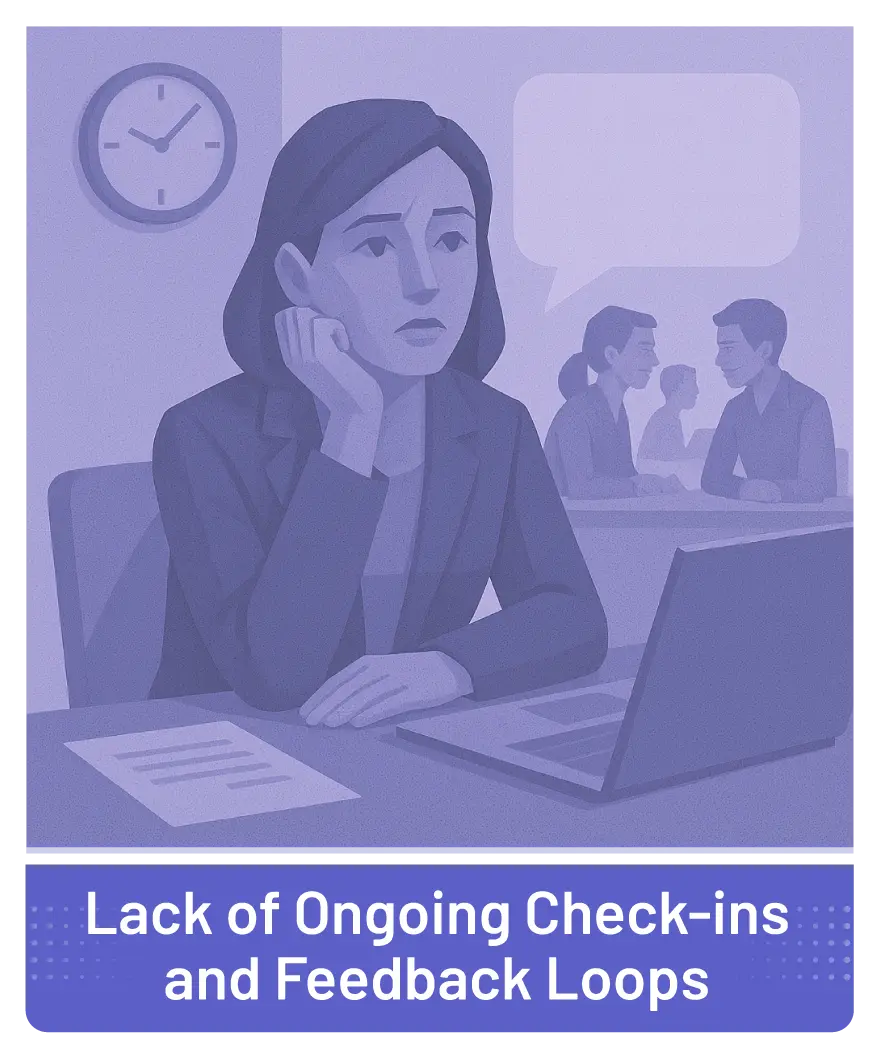Get the Ebook
.svg)
According to Jorgen Sundberg, CEO and Founder of Link Humans, poor onboarding can cost companies up to $240,000 per bad hire. Yet, a Gallup study on onboarding has found that 88% of organizations admit their onboarding process needs improvement. Employee onboarding is a nuanced process that is quite open to common and costly mistakes. In this article we will be going over just what those mistakes are and how you can avoid them. These common onboarding mistakes destroy new hire confidence and drive talented employees away before they even start contributing.

The biggest onboarding mistake happens before your new hire even walks through the door. Without a structured preboarding process, new employees feel forgotten, anxious, and disconnected from your organization during the critical period between accepting the offer and starting work.
The research we referred to above also shows that 69% of employees are more likely to stay with a company for three years if they experienced great onboarding. Preboarding sets the tone for this entire employee experience and addresses the natural anxiety that comes with starting a new job.
Modern employees expect seamless digital experiences in their personal lives, and they bring these same expectations to work. A disorganized preboarding process signals that your company lacks attention to detail and doesn't prioritize employee experience.
Impact of Poor Preboarding:
Effective preboarding creates excitement and reduces first-day anxiety. Your preboarding communication should provide essential information while building anticipation for the new role.
Essential Preboarding Elements:
Preboarding Timeline:

Information overload is one of the most common onboarding problems that derails new employee success. When you dump everything on new hires at once, they retain almost nothing and feel overwhelmed instead of empowered.
The human brain can only process a limited amount of new information at once. When you exceed this capacity, new employees experience cognitive overload, leading to poor retention and increased stress levels.
Studies show that people forget 50% of new information within an hour and 90% within a week without proper reinforcement. This is why the traditional "drinking from a fire hose" approach to onboarding fails so consistently.
Signs of Information Overload:
Smart onboarding spreads information across time using spaced repetition and progressive disclosure. This approach improves retention while reducing overwhelm.
Week 1 Focus Areas:
Week 2-4 Focus Areas:
Content Delivery Methods:

Nothing kills new hire confidence faster than unclear expectations and a chaotic first day. When employees don't understand what success looks like or what they're supposed to be doing, they feel lost and unproductive.
Role clarity is fundamental to employee engagement and performance. New hires need to understand not just what they'll be doing, but how their success will be measured and what impact they're expected to make.
Vague job descriptions and unclear expectations contribute to 23% of employee turnover within the first year. Clear role definition, on the other hand, increases job satisfaction by 2.5x and improves performance by 25%.
Essential Clarity Components:
A well-planned first week creates momentum and builds confidence. Every activity should have a purpose and contribute to the new hire's understanding of their role and the organization.
Day 1 Structure:
Week 1 Milestones:
Week 1 Deliverables:

Technical onboarding gets most of the attention, but social onboarding often determines whether new employees thrive or leave. Without meaningful connections, even the most qualified new hires struggle to integrate and perform effectively.
Workplace relationships are fundamental to employee engagement and performance. Employees with strong workplace friendships are 7x more likely to be engaged and show 50% higher retention rates.
Social isolation, especially in remote and hybrid environments, leads to decreased motivation, reduced collaboration, and higher turnover. New employees who don't form connections within their first 90 days are 3x more likely to leave within the first year.
Benefits of Strong Social Onboarding:
A well-designed onboarding buddy program provides new hires with a go-to person for questions, cultural guidance, and social connection. The key is selecting the right buddies and providing them with proper training and support.
Buddy Selection Criteria:
Buddy Program Structure:
Remote Buddy Best Practices:

The most dangerous onboarding mistake is assuming the process ends after the first week or month. Without ongoing check-ins and feedback loops, small issues become big problems, and new hires drift away before anyone notices they're struggling.
An effective onboarding is continuous a process that shouldn't end within the first week. Research shows that it takes an average of 8 months for new employees to reach full productivity, yet most onboarding programs last only a few days or weeks.
Extended onboarding programs that last 90 days or more result in 50% higher retention rates and 62% higher productivity scores. The key is maintaining engagement and support throughout the critical first quarter.
Extended Onboarding Timeline:
Regular feedback collection allows you to identify and address onboarding issues before they become retention problems. Multiple feedback mechanisms ensure you capture different types of insights and concerns. From employee onboarding surveys to 30-60-90 day reviews, there are plenty of ways to receive input from your new hires.
Feedback Collection Methods:
Key Questions to Ask:
Response and Action Planning:

Modern onboarding requires modern tools that automate routine tasks while enhancing human connections. While there are plenty of amazing tools out there, the best employee onboarding software for organizations in the Microsoft ecosystem is Teamflect. Teamflect helps organizations avoid the common onboarding mistakes mentioned above and creates a seamless employee onboarding experience inside Microsoft 365 through its Microsoft Teams integration.
Manual onboarding processes lead to missed steps and inconsistent experiences. Teamflect automates your employee onboarding process while maintaining the personal touch that new hires need.
Automated Features:
Vague expectations destroy confidence and performance. Teamflect embeds role clarity directly into your regular meetings and goal-setting processes.
Role Clarity Tools:
Consistent feedback collection requires structure and automation. Teamflect provides templates and workflows that ensure no new hire falls through the cracks.
Feedback Loop Features:
An all-in-one performance management tool for Microsoft Teams
